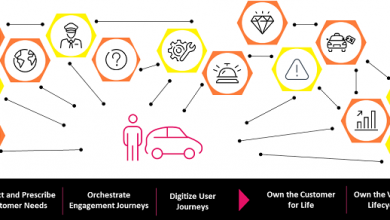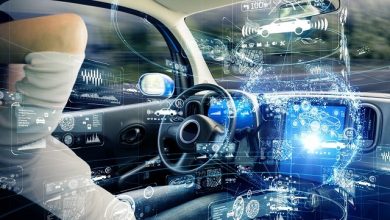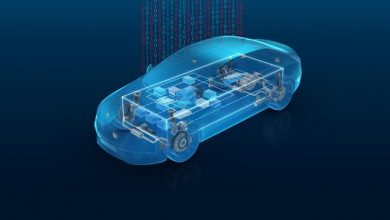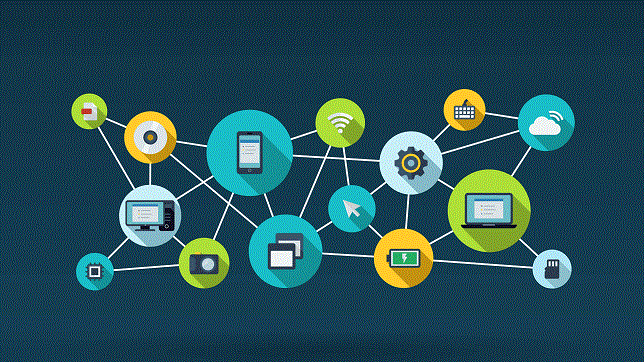Story of Connected Vehicles – Indian Market

Connected Vehicles Role:
Connected Vehicles in India are gradually acquiring an essential commodity status, in the near future customers will even not bother about asking as it will be default requirement in passenger and commercial vehicles. Connected vehicles are emerging in different business segments from long time now, talking about commercial or passenger vehicles, talking about conventional fuel vehicles or electric vehicles, connected solution plays a vital role for enhancing Customer, Manufacturers and the whole eco system experience as well.
Past, Present and Future challenges around Connected Vehicles:
Connected Vehicles have evolved over years, let’s see the past, present & future journey of connected vehicles.
In past connected vehicles usage was just revolving around the remote monitoring & usage analysis of moving assets, challenges were enormous around reliability of Telematics device, Data communication, Mobile network and centralized local servers. Over a period, these challenges raised questions on reliability and use of Connected Vehicles as whole.
Some challenges around connected vehicles in logistics industries were like driver used to disconnect the power to the Telematics devices, interfering communication of the Telematics devices by tampering the communication signals, some of the typical real-life issues experienced around the connected vehicle were around the GPS signal obstruction by drivers who had a perception that connected vehicles are for monitoring them and not the vehicle. SMS based Telematics devices performance used to depend on the number of SMS received at SMSC of a Mobile Network Operator, which used to worsen during festive season when the SMS used to get bombarded during midnight. But as the whole ecosystem has evolved and technology grew the SMS based services got developed in to GPRS based services and GPRS in to LTE, streaming of data became reliable and faster on 3G network (GPRS) to LTE, the communications protocols have evolved.
These challenges were also around the passenger car segment which had its own technological constraints and concerns of sharing the usage data to a Telematics service provider. Off the shelves device market was growing due to which non standard Telematics hardware was spreading all over the industry. Telematics devices and service providers creeped into the market sighting profits in the market. Business models were getting designed into subscription-based services, recurring cost was focused more towards the Service cost and operational cost. Even the SaaS model was being experimented in this field, where the Fleet Management solution software was being installed on the client machine which was charged based on the number of users. All in all, different business models were being explored.
Past features of Connected Vehicles & Evolution:
These vehicles were connected to its owners or Fleet Owners through Web Based solutions and SMS Alerts, many Alerts such as over speed, Power supply disconnected or resumed were formulated for real time experience for the customers. Over a period specifically in logistics industry consignment tracking solutions were designed and used for calculating ETA (Expected Time of Arrival) and give a fulfilling experience with the geofence Alerts. Many logistics businesses flourished which used this connected vehicle operations in a persistent way. There were many challenges however which were to be solved yet, including the cost of Telematics devices which is main ECU in this connected vehicle solution.
SMS based devices or CDMA based devices got developed in to GPRS based devices, which used to communicate to the centrally based servers over UDP or TCP/IP. Challenges were enormous around design of devices, the memory handling on the Communication devices like Telematics Devices. The message queuing issues at servers. Parsing logics and design of DB played a crucial part in connected vehicle experience for the customers. Connected Vehicles were bound to off car functions and features and were more over surrounded by safety features as well, some organizations used the Fleet Management solution around safety features such as Driver behavior, Route Deviation and monitoring continuous driving hours for drivers. Many accidents were averted by using these features and making road safer for drive, Connected Logistics solutions were embraced by many transporters and organizations. Organizations started realizing the importance of connected vehicles and revenue benefits around this solution.
Feature Inheritance:
Solutions around School Busses and BPO services also got evolved which were helpful to develop safety for Children and Women workforce, by keeping track of the Vehicle and providing a SOS service in case of an emergency. These ideas were inherited into Connected Taxis as well, where the Estimated time of Arrival and Safety of women travelling alone was of utmost importance.
Until times the Connected Vehicle features were focused on the off-car functionality and real time information for Vehicle owners, be it commercial or passenger segment vehicles.
In-Vehicle & Off-Vehicle feature development:
The In-car connectivity and customer entertainment has been a big leap in the connected vehicle domain, the internal communication network of the vehicles played a strong role in the technology enhancements, which also helped to develop many functions around user experience.
Some of the benefits which are extended by connected vehicles to OEMs and consumers are as follows:
- Connected Vehicles are a converted into wizard, which can be controlled by the user and remain 24×7 connected with the owner and servers, the user is always connected to their vehicles through Mobile App and can control and monitor the vital parameters of vehicles on the go.
- User can study the driving behavior and can improve on it, resulting in fuel saving and develop safe driving habits.
- A user has an advantage of having in car entertainment on the go.
- A user can have best navigation services which always proves helpful to drive on unfamiliar roads.
- OEMs can have reduction in AfterSales or Customer services.
- OEMs can design better products by studying the usage of connected vehicle functionality.
- Over The Air firmware updates help the users to get latest features developed at comfort of sitting at home.
These are some of the basic advantages for consumer and OEMs around connected vehicles.
Connected Vehicle Present & Ecosystem enablers:
Apart from this, other enablers who play important role in the connected vehicles ecosystem are the Mobile Network operators, Cloud services provider and Hardware developers. Today most important developments around IoT are proving a boon for connected vehicles ecosystem. The modules such as Wi-Fi and Bluetooth are enhancing In-car connectivity experience for the users.
Mobile Network Operators (MNO) have realized the importance of connected vehicles, they are focusing on this business as a new horizon for them, with special focus on the services and security in communication, MNO has come up with some advanced solution for attracting and getting a stake in the Connected Vehicles domain.
Cloud Services are developed, and many ready components are developed which can be directly used with the secured connected vehicle architecture. Cloud service providers have studied the challenges and have developed some specific modules which solves the challenges around the Data Parsing and processing challenges in real time, this enhances the customer experience many folds.
Communication protocols such as MQTT can be used which are lightweight with publish / subscribe messaging transport that is ideal to connect with remote devices with small code foot print using minimal network bandwidth.
Connected Vehicle Security Consideration:
Focus on the connected vehicles from all the enablers is helping it to be embraced by the users. All these developments also have improved security in connected vehicle model. Security for the connected vehicles starts from the network topology design, this is of utmost importance where the connected vehicle modules are virtually separated from the other ECUs of vehicle, which will help to avoid penetration of attacker to the internal modules of car in any case. The second layer of security is around the In-vehicle module interfaces with the external world such as HMI, Wi-Fi and Bluetooth connectivity. The third layer of security is around the communication protocol between the communication devices and server which is in an encrypted format. The fourth layer of security is around the cloud servers. Thus, the complete connected vehicle model has be developed with security as the utmost area of focus to keep the customers data safe.
The future of mobility is Shared, Electric and connected as they say, so connected vehicles are here to stay and will always be prevalent in all the segments, be it commercial, passenger, conventional fuel or electric vehicles, it must be connected. The connected vehicles will gradually talk to whole ecosystem and will attain V2X status in coming years, where the vehicle will be connected to other vehicles, Traffic systems, humans and Infrastructure components etc.
Success Factors of Connected Vehicles:
Apart from all the technological advancements, below are some of the important factors for success of implementing Connected Vehicles solution:
- Reliability of Hardware (ECU’s):
Reliability of the hardware is utmost important as the Vehicles will be moving and are not location fixed assets, so obviously difficult to service and are not available as per the schedule. Service must be made available as per the schedule of the owner or customer. So, if the Hardware is not reliable the service cost will impact the OEM’s and bring adverse experience to customers.
In this OTA also helps, where in newer services can be provided to customers with some basic service support to the customer.
- Design of Data Packets, Categorization & Database design:
The data packets which will be sent by the Communication device must be designed wisely to capture most relevant data in one go and the interval of data packet transmission which will impact the data usage, which directly depends on the data tariffs charged by MNO. Most efficient design will have shorter and meaning full data to be transmitted which also contributes to load on the server and application. The parsing and processing of data should be faster and real time which is significant for customer experience.
- Project Driving and Implementation:
Connected vehicle projects need a specific experienced work force to drive and deliver the project, it’s not a mainstream product or project which can be managed with some hardware or software project managers. These projects need whole lot of experience and an ecosystem around Telecom, Software, Hardware, GPS, Applications and Cloud server experience. Sometimes the connected vehicle projects fail due to lack of experience around it and if considered as a project with a mainstream project or product.
- User Interface for Web Application and Mobile Application:
Like other applications, the UI/UX plays an important role in making connected vehicle implementation successful. Its all about how easy a feature can be understood and accessed by user, for example a feature which is most used must be on the landing page and should not require more clicks to reach the feature in the application. The data placed on the landing page must be most relevant and real time, which contributes for the success criteria of Connected Vehicle solution.
- Operations & AfterSales Service:
In Logistics business the connected vehicles play a prominent factor in profit enhancements, but only when the Connected Vehicles functions and features are used wisely. Day to day operations and services matter for keeping the essence of connected vehicles live. The vehicles are to be monitored daily and the usage reports are to be used wisely at all the levels of authority. Here the workforce with right experience helps, which otherwise can lead to failure of the solution.
Business models around operations and services have got created in the market who supply the third party connected solutions and provide an operations and service solution for the connected vehicles. This help to save a lot around the efforts and generate profits for the Fleet owners.
Disrupting phase in Connected Vehicles:
The current market of connected vehicles is undergoing a huge disruption with emerging mobility traits like the focus on the last mile connectivity for passengers, where the e-auto, e-rick and other small vehicle manufacturers are making their way in the mobility domain. In the taxi market two wheelers are making their way with connected scooters and e-cycles as well. Every where people are talking about the charging stations and battery swapping stations for commercial vehicles. But above all these vehicles will remain connected.
Connected vehicles market will still grow and every vehicle on the road will be connected in coming years, AI, ML and data analytics will help to connect these vehicles with more modules in the ecosystem thus making travel safer, easier and enjoyable.
“As published, Analysts forecast that by 2023, worldwide sales of connected vehicles will exceed more than 70 million units, meaning that nearly 70% of worldwide new light-duty vehicles and trucks will be shipped with embedded connectivity, bringing new services and business models to bear in automotive markets”.
References: https://technative.io/digital-inclusion-what-does-it-bring-to-the-future-of-connected-vehicles/
Author:

Yashpal Singh
AGM – IT (Connected Car)
MG Motor India Pvt. Ltd.
Yashpal has over 19 years of experience in totality including 15 years in connected vehicles & solutions, his experience spreads over conventional fuel & Electric vehicles including fleets for last mile connectivity, he has global experience in Connected Vehicle domain, his experience spreads over various organizations like MG Motor India, Reliance Industries Ltd., Mahindra Reva Electric Vehicles, Tata Technologies, Nio and Sun Mobility.
Published in Telematics Wire





